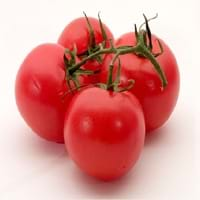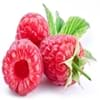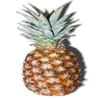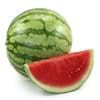Health Benefits
Anti depressant, Cancer prevention, Heart care, Muscle pain relief, Prevents constipation, Regulation of heart rate, Weight loss properties
Anti-oxidant properties, Boosts immune system, Skin rejuvenation, Strengthening of bones
General Benefits
Controls blood pressure, Eye care, Maintains healthy cholesterol level, Strengthens bones
Antiseptic properties, Cures headache, Removes waste from kidney
Skin Benefits
Anti-aging benefits, Heals sunburn, Skin rejuvenation, Treatment of acne, Treatment of skin diseases
Hydrates skin
Hair Benefits
Good conditioner, Prevents hair loss, Softening mask
Good conditioner
Allergy Symptoms
Anaphylaxis, Coughing, Diarrhea, Eczema, Hives, Itching sensation in throat, Nausea, Skin Rashes, Runny nose, Sneezing, Swelling of mouth, tongue or lips, Vomiting, Wheezing
Chest pains, Rhinitis, Wheezing
Side Effects
Heart burn
Unknown
Best Time to Eat
Along with meal, Don't consume at night and before bed, Morning time (before lunch)
As a snack in the late afternoon, Don't consume at night and before bed, Eat the fresh ones, avoid mixing with any other foods, don't eat after meal., Morning time (before lunch)
Vitamin B5 (Pantothenic Acid)
Vitamin C (Ascorbic Acid)
Vitamin K (Phyllochinone)
Calories in Fresh Fruit with Peel
Calories in Fresh Fruit without Peel
Not Available
Not Available
Calories in Jam
Not Available
Calories in Pie
Not Available
Type
Berry, Fruit vegetable
Tree fruit, Tropical
Season
All seasons
Early summer, Early winter, Late fall, Late spring
Varieties
Better Boy, Early Girl, Beefsteak, Beefmaster, Pink Brandywinem, Caspian Pink, Thai Pinks, Hawaiian Pineapple, Kellogg’s Breakfast, Cherokee Purple, Black Ethiopian and Paul Robeson
Rongrien, Chompu, Rapiah, Bingjai and Lebak Bulus
Color
Green, Orange, Pink, Purplish black, Red, White, Yellow
Coral red, Yellow
Inside Color
Red
Greyish-white
Taste
Sour, Sweet
Sour, Sweet
Origin
Central America, South America
Unknown
Soil Type
Loam, Sandy loam
Clay, Loam
Climatic Conditions
Sunny, Warm
Humid
Facts about
- Around 10,000 varieties of tomatoes are grown in the world.
- In Buñol, people celebrate the Tomatina festival where around 1.5 lakh tomatoes are used.
- As per Guinness book of records, heaviest tomato weighed 3.51 kg.
- Oils extracted from its seeds is used to make soaps and candles.
- 'Rambut' means hairy in Malay.
- It makes the best hair mask.
- Seeds are edible and healthy too.
Top Producer
China
Thailand
Other Countries
Brazil, Egypt, India, Iran, Italy, Mexico, Spain, Turkey, United States of America
Africa, India, Indonesia, Malaysia, Philippines, Sri Lanka
Top Importer
Nigeria
Singapore
Top Exporter
Netherlands
Thailand
Botanical Name
Solanum lycopersicum
Nephelium lappaceum
Synonym
Lycopersicon esculentum
Rambota
Subkingdom
Tracheobionta
Tracheobionta
Division
Magnoliophyta
Tracheophyta
Class
Magnoliopsida
Magnoliopsida
Subclass
Asteridae
Rosidae
Order
Solanales
Sapindales
Family
Solanaceae
Sapindaceae
Species
S. lycopersicum
N. lappaceum
Generic Group
Nightshade
Not Available
Difference Between Tomato and Rambutan
We might think that Tomato and Rambutan are similar with respect to nutritional value and health benefits. But the nutrient content of both fruits is different. Tomato and Rambutan Facts such as their taste, shape, color, and size are also distinct. The difference between Tomato and Rambutan is explained here.
The amount of calories in 100 gm of fresh Tomato and Rambutan with peel is 18.00 kcal and 69.00 kcal and the amount of calories without peel is Not Available and Not Available respectively. Thus, Tomato and Rambutan belong to and category.These fruits might or might not differ with respect to their scientific classification. The order of Tomato and Rambutan is Solanales and Sapindales respectively. Tomato belongs to Solanaceae family and Rambutan belongs to Sapindaceae family. Tomato belongs to Solanum genus of S. lycopersicum species and Rambutan belongs to Nephelium genus of N. lappaceum species. Beings plants, both fruits belong to Plantae Kingdom.









